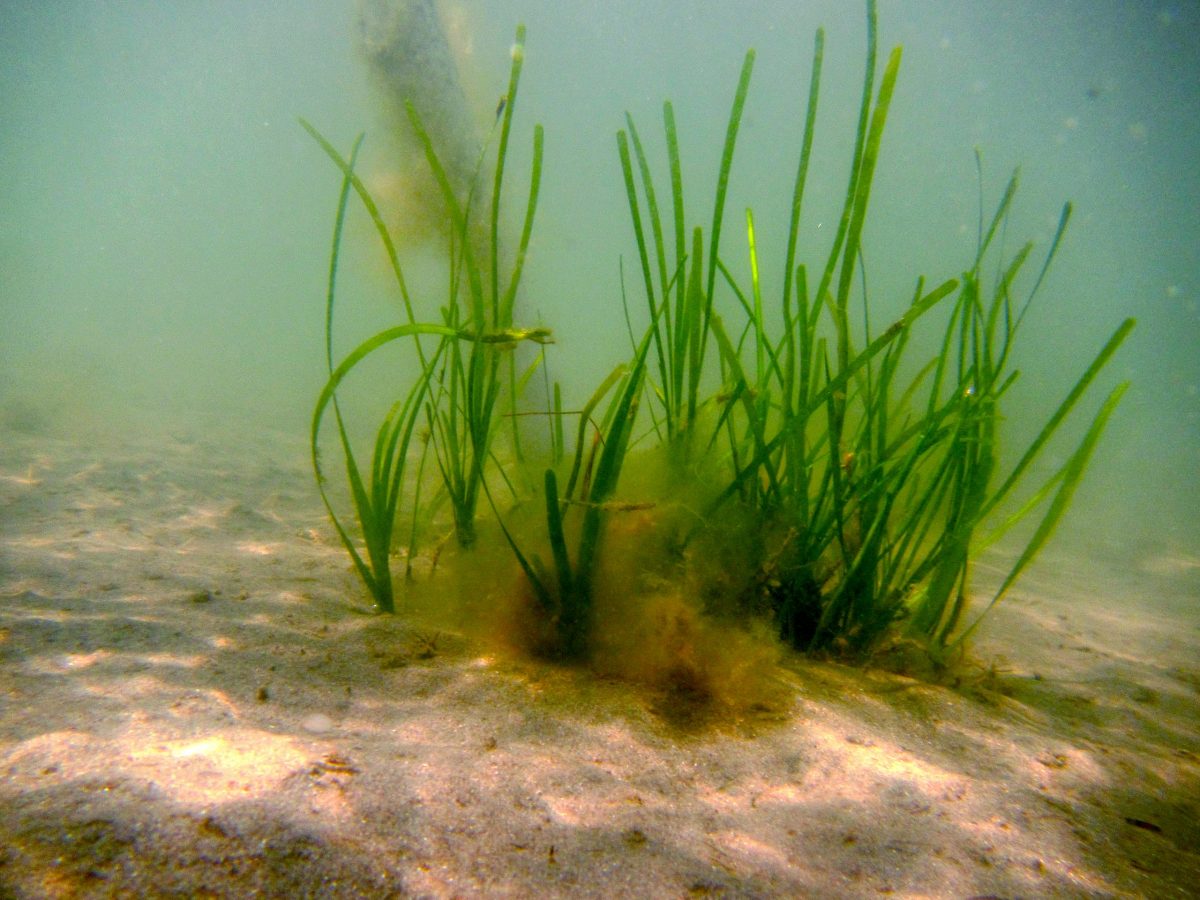Scotland's Coastal Revival: The Role Of Seagrass Restoration Bids

Table of Contents
The Ecological Importance of Seagrass in Scotland's Coastal Waters
Carbon Sequestration and Climate Change Mitigation
Seagrass meadows are often referred to as "blue carbon" ecosystems due to their exceptional capacity for carbon sequestration. They absorb atmospheric CO2 at a rate significantly higher than many terrestrial forests, acting as vital carbon sinks. Studies suggest that seagrass can sequester up to 35% of the ocean's carbon, making their restoration a crucial tool in mitigating climate change.
- Specific benefits for Scottish coastal regions: Reduced CO2 levels in coastal waters, improved water quality, and enhanced resilience to ocean acidification.
- Government initiatives and targets: The Scottish Government's commitment to net-zero emissions by 2045 necessitates the protection and restoration of vital carbon sinks like seagrass meadows. Several climate change adaptation strategies explicitly mention enhancing blue carbon ecosystems.
Biodiversity Support and Habitat Creation
Seagrass meadows are incredibly biodiverse habitats, providing crucial nursery grounds and feeding areas for a wide range of species. These underwater meadows support a complex food web, benefiting both commercially important species and the wider ecosystem.
- Scottish wildlife thriving in seagrass habitats: Numerous fish species (cod, plaice, seahorses), shellfish (scallops, mussels), and seabirds rely on seagrass for food and shelter. The endangered seahorse population, for instance, is heavily reliant on healthy seagrass meadows.
- Importance for commercially valuable species: Many commercially important fish species spend part of their life cycle in seagrass beds, making seagrass restoration vital for sustainable fisheries management in Scotland.
Coastal Protection and Erosion Control
Seagrass meadows act as natural buffers, absorbing wave energy and reducing coastal erosion. Their dense root systems stabilize sediments, preventing soil loss and protecting coastal communities and infrastructure.
- Coastal erosion challenges in Scotland: Many areas of Scotland's coastline are vulnerable to erosion due to rising sea levels and storm surges.
- Seagrass restoration's contribution to coastal resilience: By restoring seagrass beds, we can enhance the natural defenses against coastal erosion, safeguarding valuable habitats and property.
Funding Opportunities and Seagrass Restoration Bids
Types of Funding Available
Securing funding for ambitious seagrass restoration projects requires a comprehensive understanding of available resources. Various funding streams can support these crucial initiatives:
- Government grants: The Scottish Government, through agencies like NatureScot, offers grants for environmental restoration projects, including seagrass restoration.
- Private investment: Several private foundations and corporations are increasingly interested in funding blue carbon initiatives, recognizing their importance in climate change mitigation.
- EU funds: European Union programs, such as the European Maritime and Fisheries Fund (EMFF), may offer funding for marine conservation projects. [Link to relevant funding bodies]
The Bidding Process and Requirements
A successful seagrass restoration bid requires meticulous planning and a compelling proposal. Key elements include:
- Detailed project plan: A clear outline of project goals, methodology, timelines, and expected outcomes.
- Thorough environmental impact assessment: A comprehensive assessment of potential environmental impacts and mitigation strategies.
- Realistic and well-justified budget: A detailed breakdown of all project costs, demonstrating value for money.
- [Link to application portals]
Collaboration and Partnerships
Successful seagrass restoration relies on collaboration among various stakeholders:
- Scientists: Provide scientific expertise and data to inform project design and implementation.
- Government agencies: Provide funding, permits, and regulatory oversight.
- NGOs: Contribute expertise and community engagement.
- Local communities: Essential for project success through active participation and knowledge sharing.
Success Stories and Case Studies
Examples of Successful Seagrass Restoration Projects in Scotland
Several successful seagrass restoration projects in Scotland demonstrate the potential for significant ecological benefits. [Link to relevant case studies and reports with before-and-after images]. These examples highlight best practices and lessons learned that can inform future seagrass restoration bids.
Measuring the Success of Seagrass Restoration Bids
Rigorous monitoring is crucial to assess the effectiveness of restoration efforts:
- Species counts: Tracking the abundance and diversity of species within restored seagrass meadows.
- Biomass measurements: Assessing the growth and health of seagrass plants.
- Carbon sequestration rates: Measuring the amount of CO2 absorbed by restored seagrass beds.
Investing in Scotland's Future Through Seagrass Restoration Bids
Seagrass restoration offers numerous benefits for Scotland's coastal ecosystems, including carbon sequestration, biodiversity enhancement, and coastal protection. Securing funding through competitive seagrass restoration bids is crucial to implement large-scale restoration projects. We urge readers to explore funding opportunities, participate in community restoration efforts, and learn more about seagrass conservation to ensure a healthy future for Scotland's coast. Discover more about seagrass conservation bids and funding for seagrass restoration by visiting [link to relevant websites and resources]. Let's work together to protect this vital marine resource and contribute to a sustainable future for Scotland's stunning coastline.

Featured Posts
-
 The Global Ev Race Chinas Lead And Americas Response
May 05, 2025
The Global Ev Race Chinas Lead And Americas Response
May 05, 2025 -
 Bradley Coopers Daughter Lea And Matching Green Jackets At Super Bowl 2025
May 05, 2025
Bradley Coopers Daughter Lea And Matching Green Jackets At Super Bowl 2025
May 05, 2025 -
 The Accountant 2 Why Anna Kendrick Is Crucial For A Third Film
May 05, 2025
The Accountant 2 Why Anna Kendrick Is Crucial For A Third Film
May 05, 2025 -
 Complete Ufc Schedule For May 2025 Including Ufc 315 Event
May 05, 2025
Complete Ufc Schedule For May 2025 Including Ufc 315 Event
May 05, 2025 -
 Lizzos Weight Loss Journey Diet Exercise And Body Positivity
May 05, 2025
Lizzos Weight Loss Journey Diet Exercise And Body Positivity
May 05, 2025
